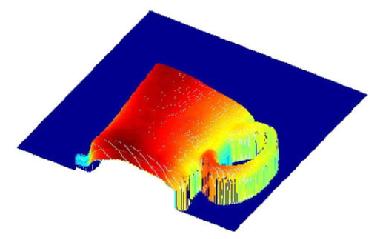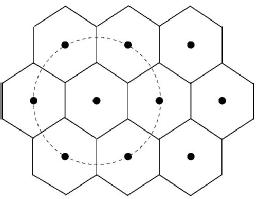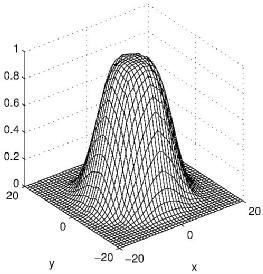Dr Staunton's Research Areas
-
Depth from Defocus DfD.

As an alternative to using stereo image pairs to estimate the distances to many points on an object, it is possible to use two images acquired along the same optical axis, where the images are differently defocussed. To do this accurately we have devised sophisticated models of the transfer function of the lens when it is both focused and defocused. We are interested in calculating the depth to every pixel represented in the image at the video rate, and are researching an FPGA based process to achieve this. As an alternative process we have researched an artificial neural network to process the depth. This method is slower, but does not require the lens transfer function to be known accurately. We have also researched a single image DfD scheme where the defocus of a projected and scanned pattern is investigated and used to calculate distance.
-
Hexagonal Sampling and Processing of Images.

Two dimensional (2D) image sampling has been investigated. Hexagonal sampling, where the samples on alternate rows are offset, can require fewer samples per unit area to give equal high frequency information to normal square sampling. Additionally some processing algorithms including monochrome edge detectors and binary skeletonisers have been shown to operate more efficiently in their hexagonal variant (50% computation saving). The hexagonal sampling scheme is also being applied to height measurement on machined surfaces. Our research papers include reviews of hexagonal image processing and details of several operators. Comparisons have been made between the hexagonal and square grids.
-
Measurement of TV Camera Characteristics and improved image processing.

We have devised a technique to measure the modulation transfer function (MTF) of a CCD camera in 2D. We can do this for the lens in or out of focus. Infocus the MTF can be modelled as a Gaussian, but out-of-focus a pillbox model is better. We have modelled the MTF for the complete range using the Generalized-Gaussian. This work will be used to improve the accuracy of DfD, and we have also used it in estimations of the accuracy of various image-processing operators when computing data obtained with the camera. The technique is to set up a ground-truth image. Say some edges that an edge-detector will identify, and position these accurately. Next we build steps in brightness at each of these edges. Finally we convolve this image with the measured 2D-MTF, and add appropriate noise to produce a realistic image on which to test the edge-detector.
Current PhD projects:
-
Crofts WE: Non-contact measurement of manufactured parts using image processing (Graduated July 2008).
-
Claxton C: Depth from Defocus (Graduated July 2007), funded by Warwick University Postgraduate Research Fellowship.
-
Arumemi-Ikhide M: Design of 1-D and 2-D Digital IIR Filters with Evolutionary Algorithms for Arbitrary Design Specifications (Graduated July 2007).
-
Game A: Real-Time Implementation of Audio Watermarking (Graduated July 2009), funded by EPSRC.
-
Raj A N: Real-Time Implementation of Depth from Defocus (since Oct'2005), funded by Warwick University Postgraduate Research Fellowship.
-
Ren J: Medical Applications of Depth from Defocus (since Oct'2006).
|
|
